Tomatoes are one of the most rewarding crops for home gardeners. Whether you grow them in containers on a balcony or in a backyard garden, they offer juicy, flavorful fruits perfect for fresh eating, sauces, and preserves. But successful tomato gardening isn’t just about planting seeds and hoping for the best—it requires planning, care, and the right techniques.
In this step-by-step guide, you’ll learn how to plant tomatoes properly and boost your summer harvest with proven tips that work for both beginners and experienced gardeners.
Why Grow Tomatoes at Home?
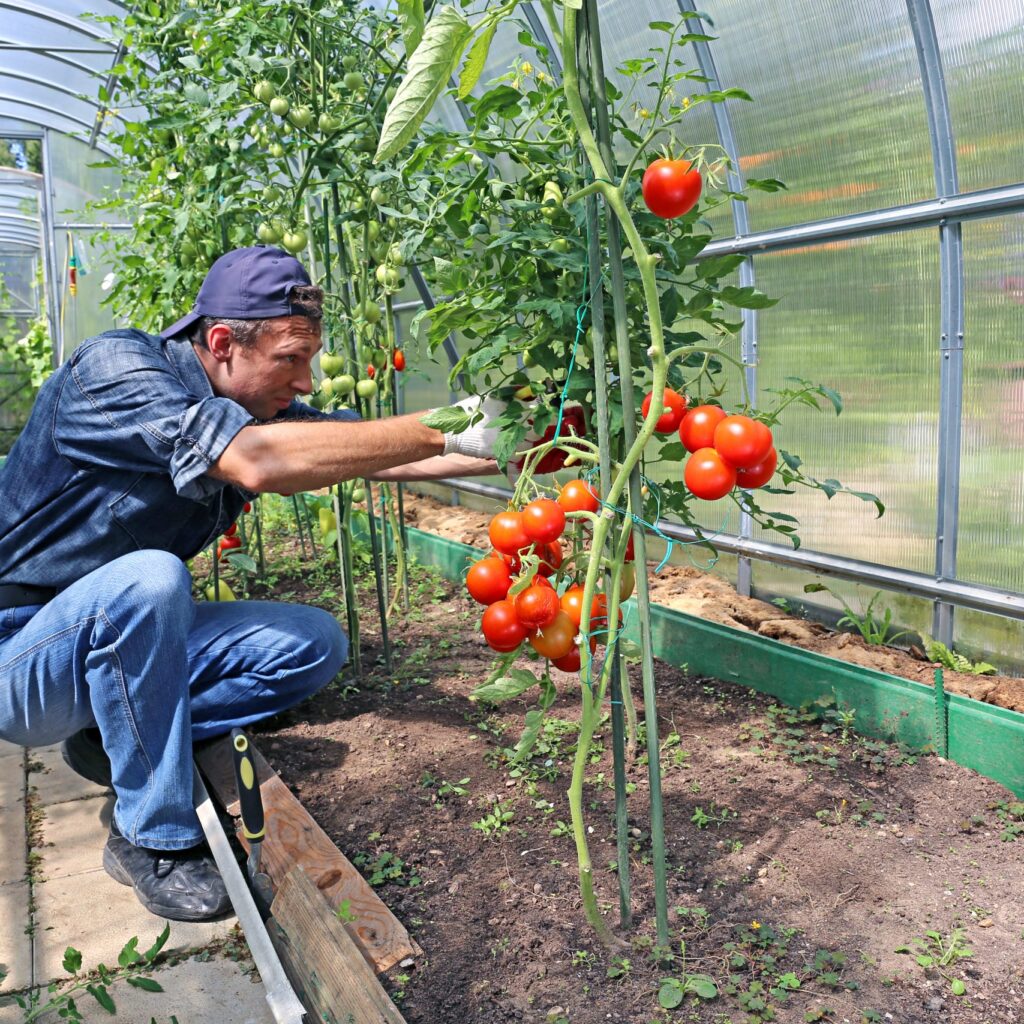
Growing tomatoes at home is both practical and enjoyable. Here are a few reasons why they’re worth planting:
- Freshness & Flavor: Homegrown tomatoes taste far better than most store-bought varieties.
- Nutritional Value: Tomatoes are rich in vitamins C, K, potassium, and lycopene, a powerful antioxidant.
- Variety: You can grow cherry, plum, beefsteak, or heirloom varieties tailored to your needs.
- Cost-Effective: A few plants can yield pounds of fresh tomatoes throughout summer.
Choosing the Right Tomato Variety
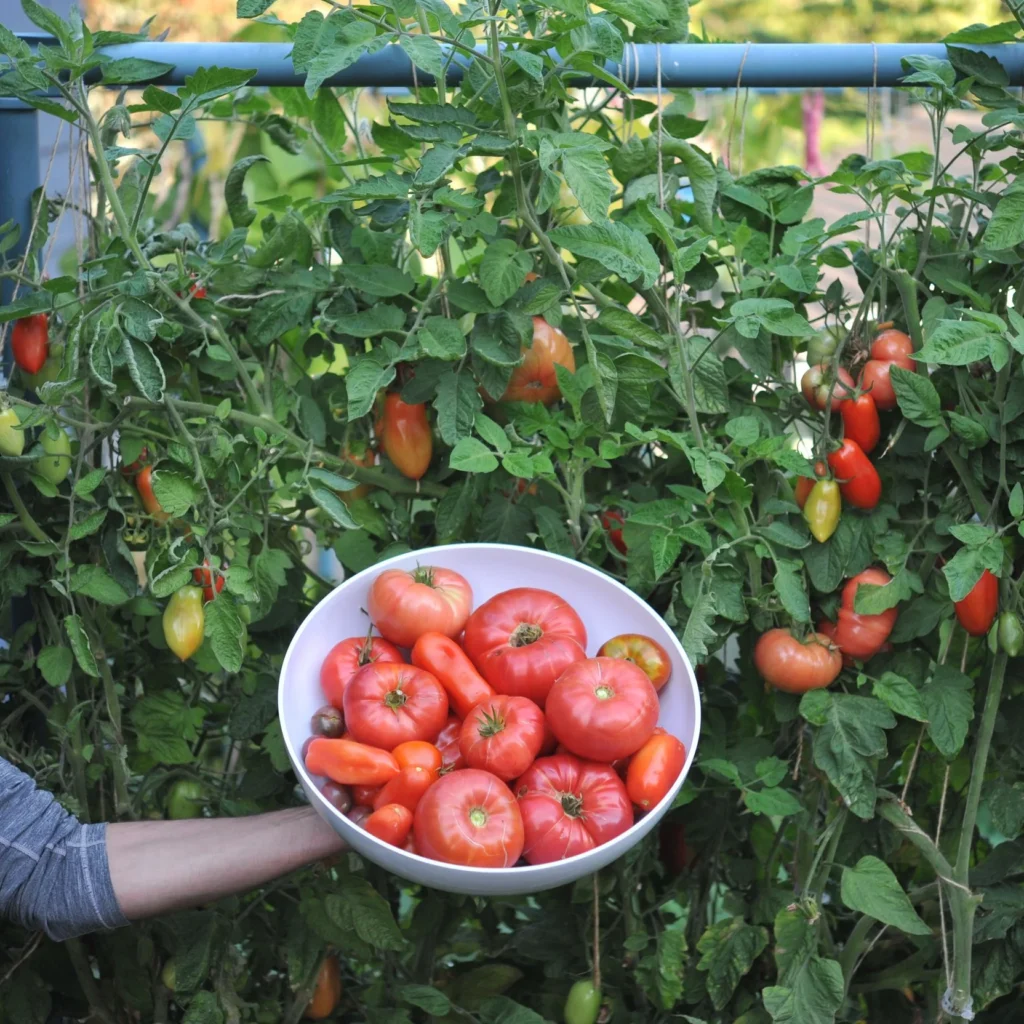
Before planting, you need to decide which tomato varieties fit your climate and garden space.
- Determinate (Bush) Tomatoes
- Grow to a set height, usually 3–4 feet.
- Produce fruit all at once, making them ideal for canning.
- Perfect for small gardens and container growing.
- Indeterminate (Vining) Tomatoes
- Grow continuously until frost.
- Produce fruits over the entire season.
- Require stakes or cages for support.
- Popular Varieties for Home Gardens
- Cherry Tomatoes – Sweet, bite-sized, perfect for snacking.
- Roma Tomatoes – Meaty flesh, ideal for sauces.
- Beefsteak Tomatoes – Large, juicy fruits great for sandwiches.
- Heirloom Varieties – Unique flavors and colors, though sometimes more delicate.
Step 1: Preparing the Soil
Tomatoes thrive in fertile, well-draining soil with a pH of 6.0–6.8. Good soil preparation lays the foundation for healthy plants.
- Loosen the soil at least 12–18 inches deep to allow root expansion.
- Add compost or well-rotted manure to enrich the soil with organic matter.
- Mix in slow-release fertilizer containing nitrogen, phosphorus, and potassium.
- Check drainage – tomatoes dislike soggy soil, so consider raised beds if your garden is heavy clay.
Step 2: Starting Seeds or Buying Seedlings
You can either start tomatoes from seed indoors or purchase healthy seedlings from a nursery.
- Starting from Seed:
- Begin indoors 6–8 weeks before the last frost date.
- Use seed trays with light soil mix.
- Provide plenty of light (a sunny window or grow lights).
- Harden seedlings by gradually exposing them to outdoor conditions before transplanting.
- Buying Seedlings:
- Choose sturdy plants 6–10 inches tall with dark green leaves.
- Avoid seedlings that look spindly, yellow, or already flowering.
Step 3: Planting Tomatoes the Right Way
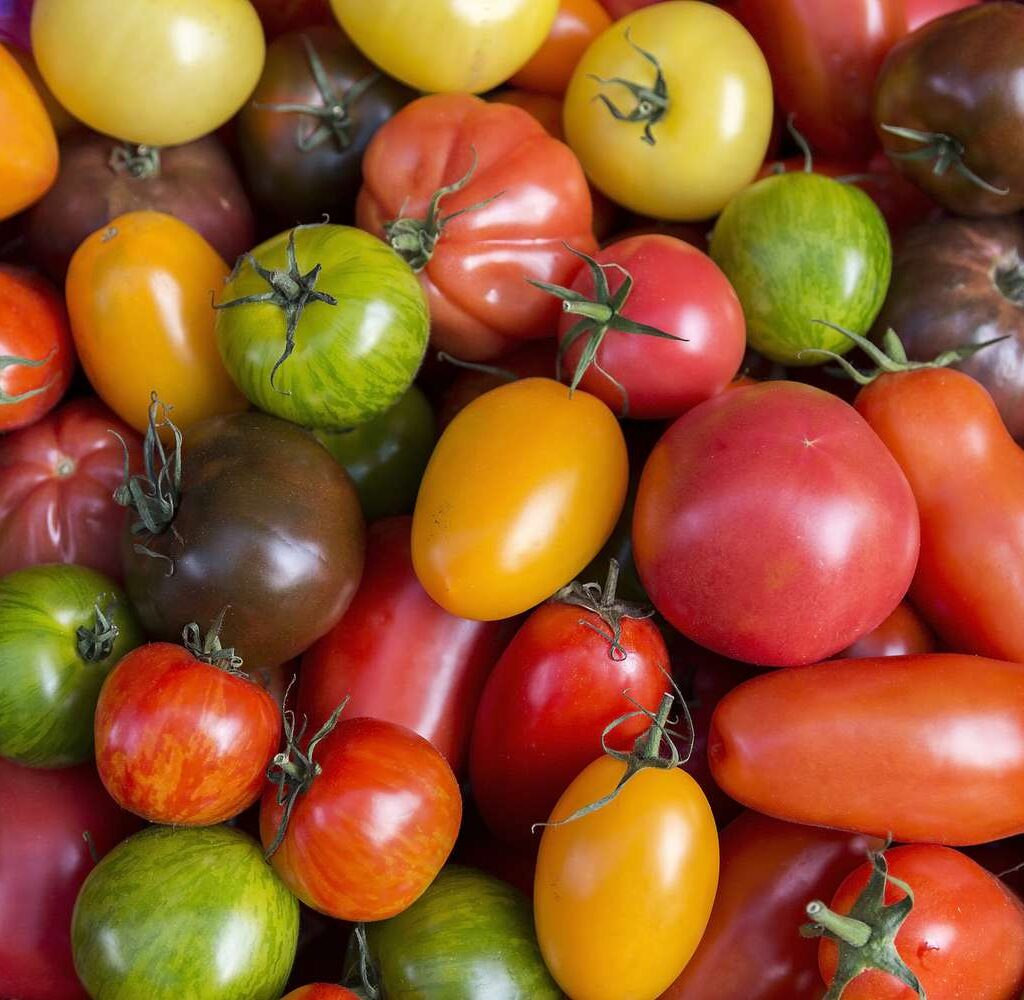
Planting technique greatly influences tomato yield.
- Planting Time: Wait until soil temperature is at least 60°F (15°C) and frost danger has passed.
- Spacing:
- Determinate varieties: 18–24 inches apart.
- Indeterminate varieties: 24–36 inches apart.
- Plant Deep: Tomatoes can grow roots along their stems. Remove lower leaves and bury two-thirds of the plant, leaving only the top leaves above ground. This strengthens the root system.
- Water Thoroughly: After planting, water well to reduce transplant shock.
Step 4: Supporting Your Tomato Plants
Since tomato plants can get heavy with fruit, they need proper support.
- Tomato Cages: Easy to use and great for determinate varieties.
- Stakes: Drive tall wooden stakes 6–8 feet deep and tie the plants as they grow.
- Trellises or String Systems: Useful for indeterminate varieties in larger gardens.
Supporting plants prevents fruit from touching the ground, reducing disease risk.
Step 5: Watering and Feeding
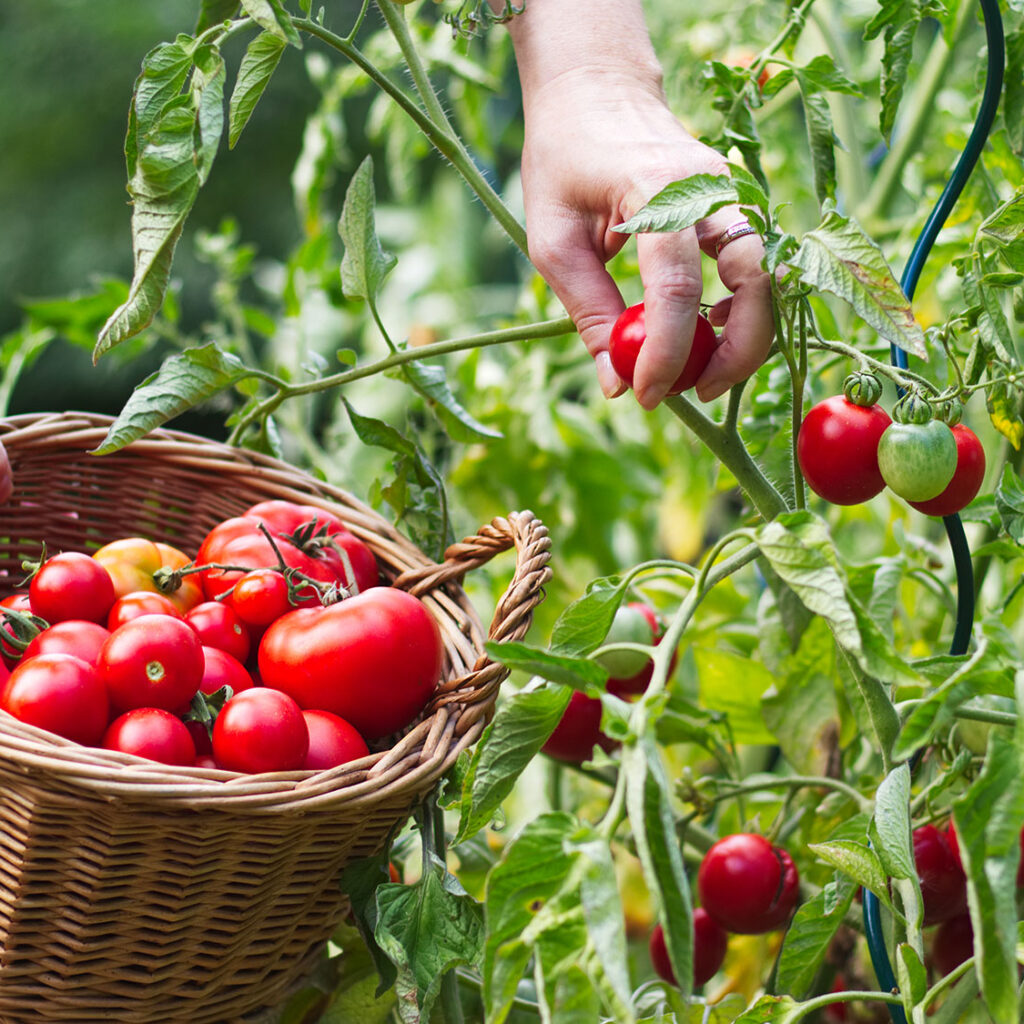
Tomatoes require consistent moisture and nutrients to produce abundant harvests.
- Watering Tips:
- Water deeply 2–3 times per week rather than frequent shallow watering.
- Aim for 1–2 inches of water per week.
- Avoid overhead watering; use drip irrigation or water at the base to prevent leaf diseases.
- Fertilizing Tips:
- Use a balanced fertilizer when planting.
- Switch to a phosphorus-rich fertilizer once flowering starts.
- Avoid excess nitrogen, which encourages leafy growth but fewer fruits.
Step 6: Mulching and Weed Control
Mulching around tomato plants helps in multiple ways:
- Retains soil moisture.
- Keeps soil temperature stable.
- Prevents weeds from competing with plants.
- Reduces soil splash, which can spread diseases.
Use organic mulch such as straw, shredded leaves, or grass clippings.
Step 7: Pruning and Maintenance
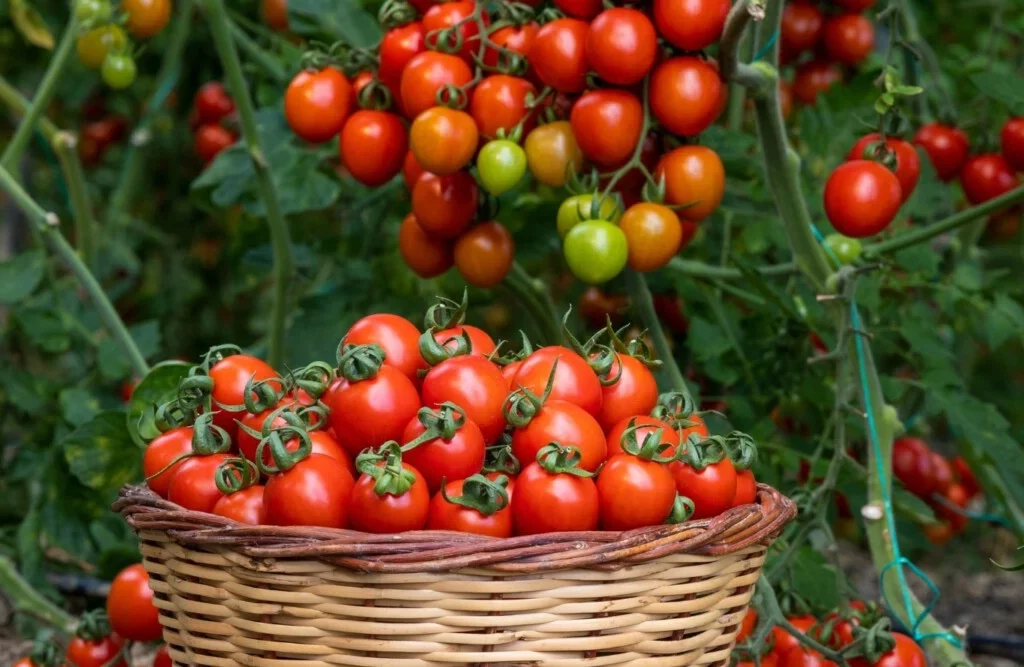
Pruning encourages better airflow, prevents disease, and directs energy toward fruit production.
- Remove suckers (side shoots that grow between the main stem and leaves) to encourage larger fruits.
- Trim lower leaves once the plant starts growing taller to reduce disease risk.
- Pinch flowers early on seedlings so they can focus on strong root and stem development.
Step 8: Pest and Disease Management
Tomatoes are prone to several pests and diseases, but proactive care reduces damage.
- Common Pests:
- Aphids – Spray with insecticidal soap.
- Tomato Hornworms – Handpick and remove.
- Whiteflies – Use yellow sticky traps.
- Common Diseases:
- Early Blight – Remove infected leaves and rotate crops.
- Powdery Mildew – Improve airflow and avoid overhead watering.
- Blossom End Rot – Prevent calcium deficiency by consistent watering.
Practicing crop rotation and not planting tomatoes in the same spot every year helps prevent soil-borne diseases.
Step 9: Harvesting Tomatoes
Knowing when to harvest is key for flavor and texture.
- Signs of Ripeness:
- Full, rich color (red, orange, yellow, or purple depending on variety).
- Slight softness when gently squeezed.
- Easy separation from the vine.
- Harvesting Tip: Pick tomatoes regularly to encourage continuous fruit production.
If frost threatens, pick green tomatoes and let them ripen indoors in a paper bag or on a sunny windowsill.
Tips to Boost Your Summer Tomato Harvest
- Companion Planting: Grow basil, marigold, or garlic near tomatoes to repel pests and improve flavor.
- Succession Planting: Plant tomatoes in stages to ensure a steady supply.
- Pinch Off First Flowers: Helps young plants focus on root growth before producing fruits.
- Consistent Care: Monitor plants daily for pests, diseases, and water needs.
Final Thoughts
Tomatoes are one of the most rewarding crops to grow in any garden. By choosing the right variety, planting deeply, providing consistent water, and managing pests wisely, you can enjoy a bountiful summer harvest of juicy, delicious tomatoes.
Whether you prefer cherry tomatoes for snacking, Roma tomatoes for sauces, or beefsteak varieties for hearty meals, following these steps ensures that your plants thrive. With a little effort and care, you’ll soon have a garden full of fresh tomatoes ready to brighten your summer table.
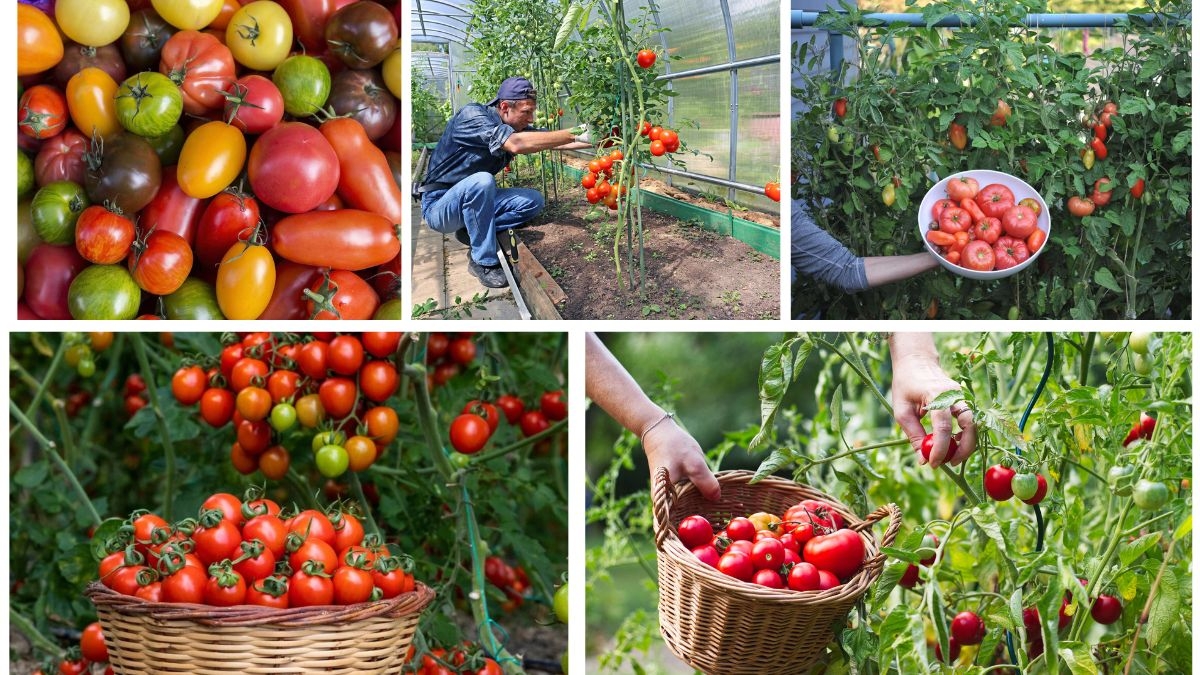




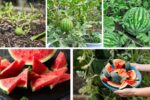
Leave A Comment